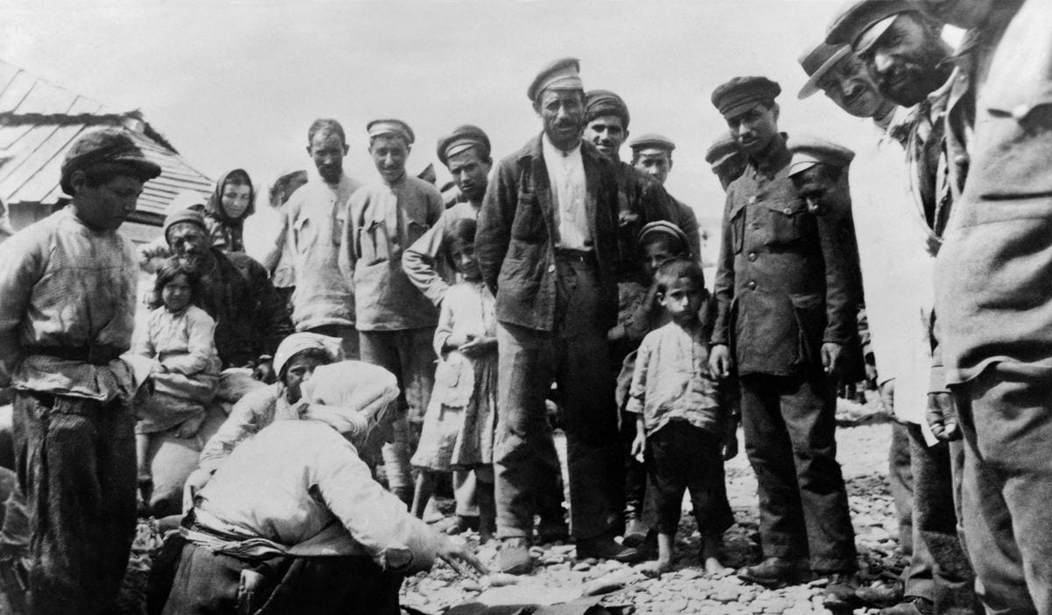Prior to the Armenian genocide of 1915, the Turkish southeastern town of Derik used to be an important center for Armenian and Assyrian/Syriac Christians. Today, only one Armenian woman remains: Yursalin Demirci.
The Kurdish news site Şûjin recently covered her story. The Armenians of Derik were first subject to massacres and deportations in 1915. The remnant Armenians emigrated from Derik in later years due to various pressures. Because of these reasons, there is no longer an Armenian community in the town. The doors of the Surp (Saint) Kevrok Armenian Church were not opened at Christmas this year. And the church bell no longer rings.
“I miss the old days,” said Yursalin. “But I have got used to the fact that there is no one left. We were born here, we grew up here and we do not want to leave our lands. Fifty years ago, when the church bell rang, the church became filled with people. I hope these days will return.”
Yursalin and her husband are the only remaining Christian couple in the town. “In Christianity, couples marry at church. But as there was no Christian priest left in the town back then, I had to marry at home.
“I am proud of being an Armenian. I have never given up on my religious faith. Our neighbors sometimes tell me to do Salah [five times daily Islamic prayers]. I do not know how to do it. … The Muslim religion is beautiful. So is Christianity. If you do not leave your faith, we don’t leave ours either.”
The city of Mardin, where Derik is also located, was for centuries a part of the Kingdom of Assyria. In the Roman period, the city itself was known as Marida (Merida), from a Syriac/Neo-Aramaic name meaning “fortress”. Marida, the center for Episcopal Sees of several Armenian, Assyrian, Syriac and Chaldean churches, fell to the Seljuk Turks led by Alp Arslan after the Battle of Manzikert in the 11th century.
Professor Peter Fraser Purton writes in his book, “A History of the Early Medieval Siege, C. 450-1220”:
“In 1064, the Armenian city of Ani [in the present-day Turkish city of Kars on the Turkey-Armenia border] situated on a step hill, fell to the Turks of Alp Arslan. [Historian]Aristakes tells [us] that this was after a section of the wall had been demolished with a catapult… A sudden collapse of a stretch of wall permitted the Turks to storm Ani.
“Following the Battle of Manzikert, Turkish forces took numerous towns: Erzerum (formerly Theodosiopolis), Diyarbakir (Amida), Mardin (Marida), Malatya (Melitene) and many others.”
The process of annihilation of indigenous Christian civilization in the region took centuries. Today, some Turkish authorities proudly declare that Turkey is 99 % Muslim. Before the 1915 genocide, however, Ottoman Turkey still had sizable Christian communities.
“Derik had in 1914 an Armenian population of 1782,” wrote Professor Raymond Kevorkian in his book “The Armenian Genocide: A Complete History”.
“The presiding judge of the court-martial in Diyarbekir, Tevfik Bey, who had just finished dealing with the Armenians of Viransehir, applied the usual procedures. From 20 to 30 June, 1915, he first eliminated the men in small groups, then turned to the women and children, who were deported and massacred a short distance from the town.”
According to the French Dominican monk, Jacques Rhétoré, in Mardin province, there were nearly 75,000 Christians of all denominations. During the massacres, nearly 48,000—or 64 percent—disappeared.
Mass murders were followed by the plunder of the Armenians’ property. Professor Kevorkian writes that the plundering of Armenians’ houses in Mardin was so widespread that it “left the city looking like a construction site. Many people were hard at work digging up the grounds around or inside the Armenians’ houses in a quest for hidden treasure. The myth of the Armenians’ gold, which is still alive and well today, excited people’s lust for gain.”
Just like the Islamic State (ISIS) is doing today in Iraq and Syria, trafficking and raping women were also commonplace: “On 15 August 1915, for the first time in Mardin, a public sale of young Armenian women was organized. Buyers had to pay from one to three Turkish pounds per head, depending on the beauty and age of the female on offer.”
On June 10, 1915, Ottoman forces began a reign of terror over Armenians and other Christians in Mardin.David Gaunt, a professor of history, describes, in a comprehensive article in the Armenian Weekly, the night of June 10, which saw the first wave of the death march of a group of 400 leading Christian figures in the city – Armenians, [Catholic] Syriacs, Chaldeans, and Protestants, who had been imprisoned during the previous week on trumped-up charges.
“At the fall of darkness, the soldiers… called out the names of the prisoners one by one, and they tied them with ropes so that they could not flee… Then those who were thought to be Armenians were taken from the others. Rings were pressed around their necks and chains around their wrists. In this way they were bound, drawn, and chained for several hours… After having arranged the men in rows, they forced them out through the prison gates. Above them weapons and swords shined. The prisoners were kept totally silent. And a town crier cried out, ‘The Christian residents who leave their houses will be amputated and put together with their co-religionists.’
“When they passed the Muslim quarter, the women came out and joked. They insulted the prisoners. Children threw stones. When the prisoners came to the Christian quarter, the residents could not go out to talk or say farewell. Many stood by the railings on their roofs and wept, praying to God. … The Christians shuffled in silence like pupils on their way to school. They made no sound.
“Many of the 400 prisoners bore the signs of torture and were very weak. Some had bleeding feet and fingers from nails that had been pulled off; broken bones; cuts about the head. Some had to be supported by others to walk at all. Beards had been torn. All of the men in this first deportation from Mardin were killed in the night between June 10 and 11.
“There were few that did not lose a family member that night… The procession became a show of the absolute power of some, and the absolute weakness of the targeted victims. Knowledge of this death march spread quickly throughout the Ottoman provinces.
“After the first death march, more deportations followed until September 1915, when there were very few ‘Armenians’ left in place. The instigators and perpetrators had become very wealthy from the bribes and confiscated property of the victims. None of the perpetrators were ever put on trial.”
Today, Turkish authorities not only still deny this genocide but also have proudly named several places such as schools, neighborhoods, streets, and boulevards after the very people who planned or were directly involved in these unspeakable atrocities.
Uzay Bulut is a Turkish journalist based in Washington D.C. Her journalistic work mainly focuses on the religious and ethnic minorities in Turkey. She was formerly based in Ankara.










Join the conversation as a VIP Member